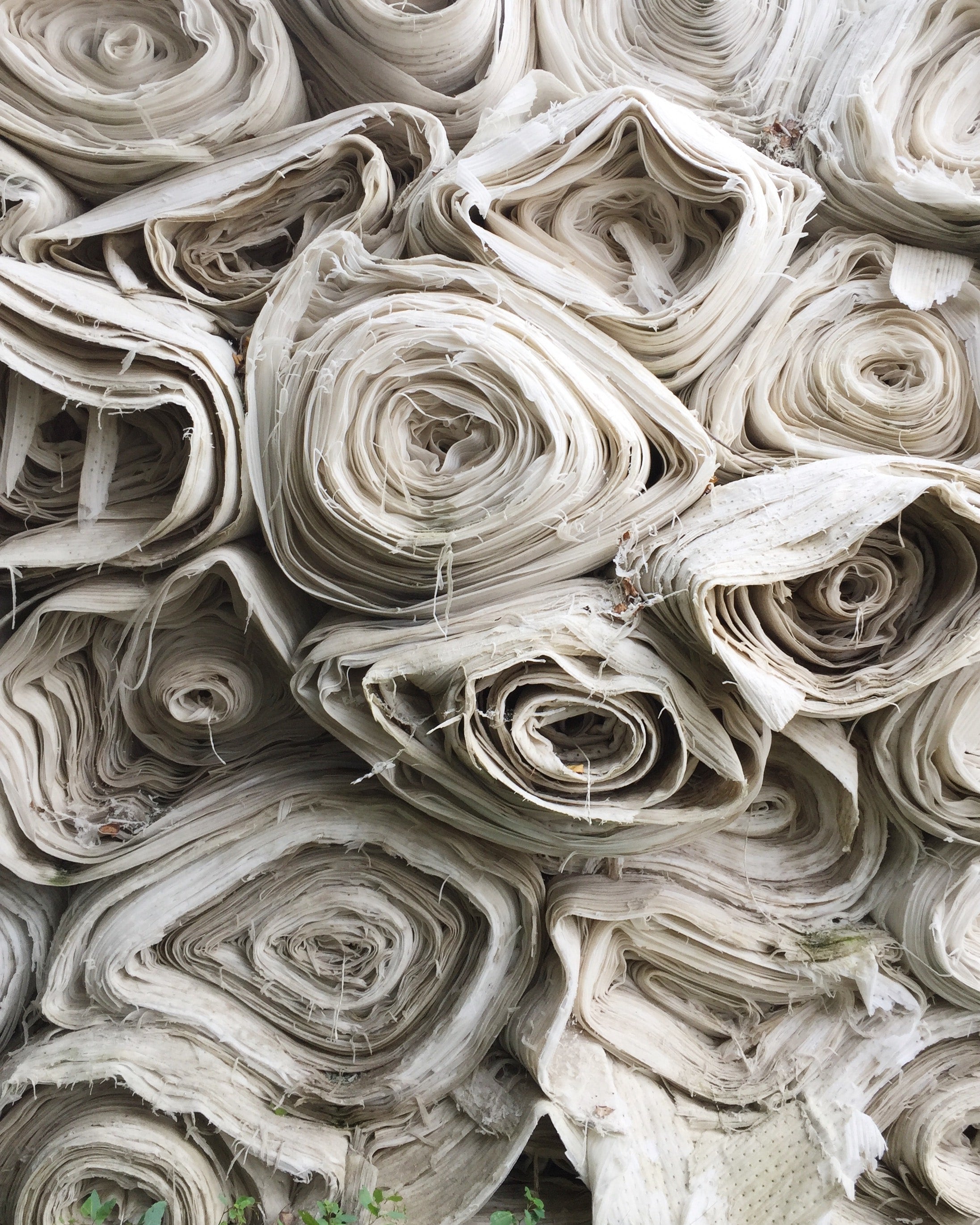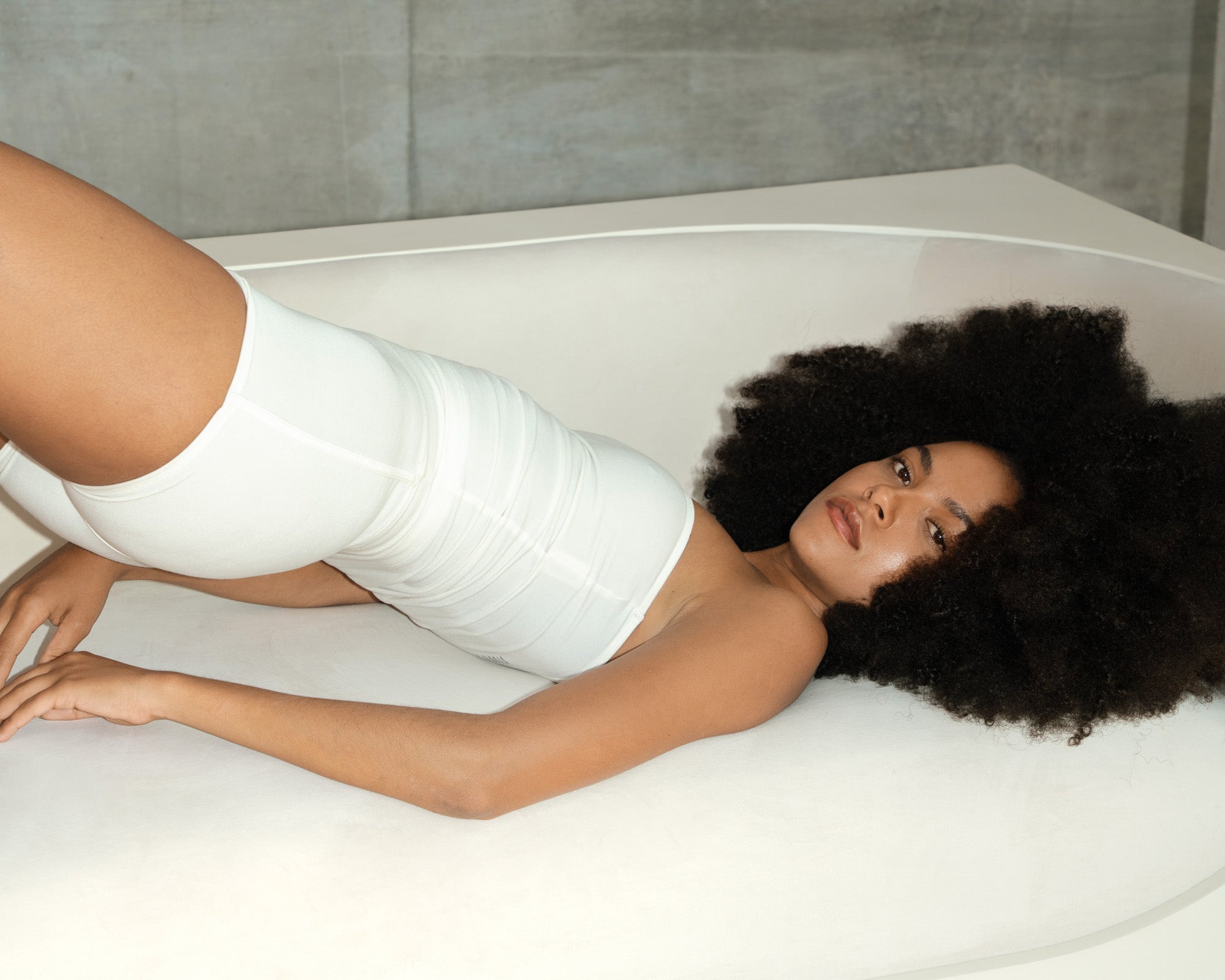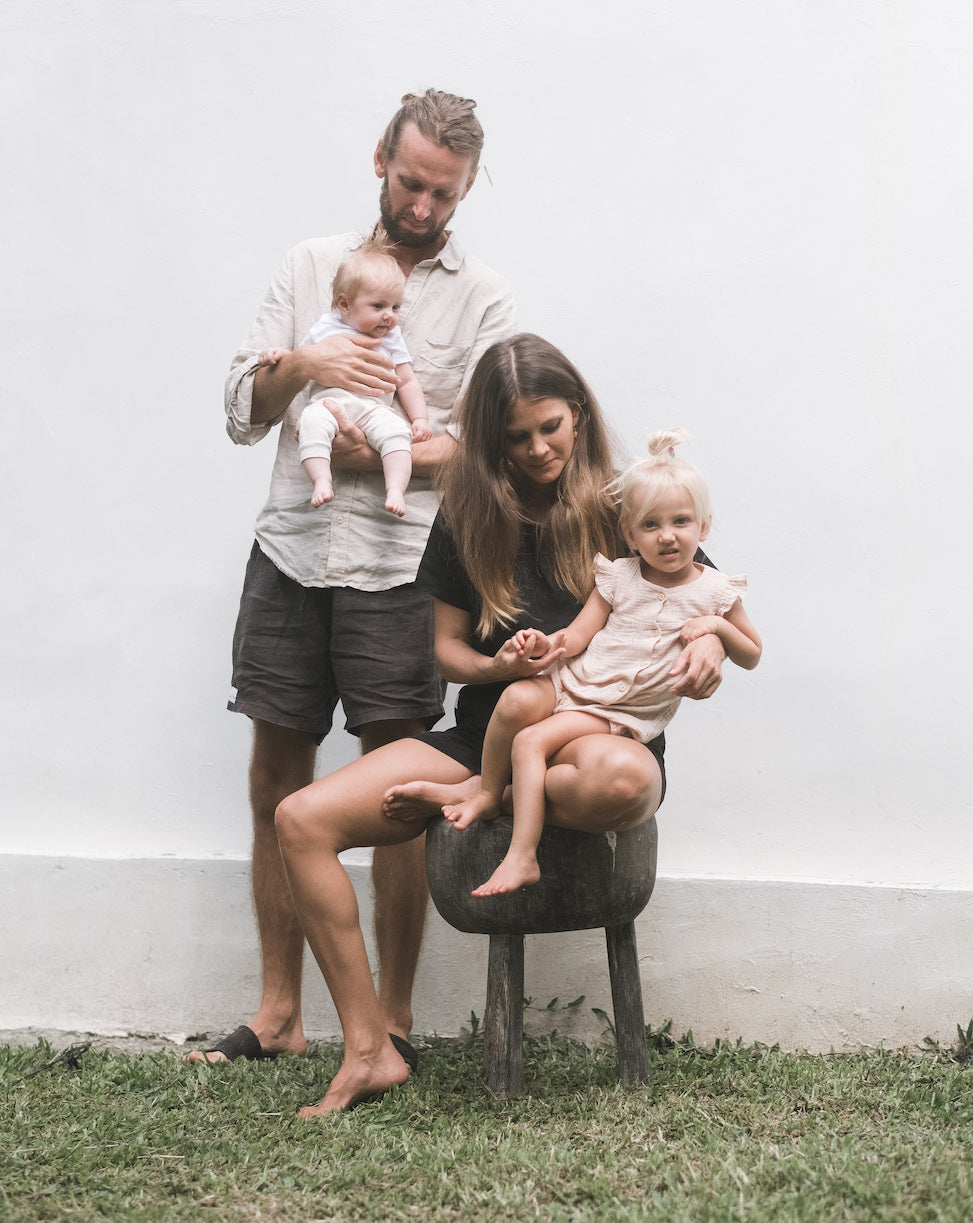
The materials we use – a material guide
Let’s talk materials!
As a sustainable and ethical fashion label we aim for transparency as an important pillar for our brand – not only to contribute to educating and informing our customers about the current state of sustainable fashion, but to also further empower customers and consumers through creating a broader understanding of the chances, challenges, issues and potential of the sustainable fashion market. The intention is to create awareness around the fact that every consumer has a choice. Choice that is in favour of humanity and our planet. Alongside many other sustainable fashion brands we intend to revolutionise our relationships with what we buy, wear and keep through offering timeless quality wear made in the most sustainable and ethical way possible.
The fabrics we use for our pieces have been carefully selected, worked on, tested, worn and fitted to provide equal, guilt-free, long-lasting quality throughout our entire product selection.
We have carefully considered each part of our production process, from the materials used, to the method of manufacture which supports our local Balinese industry. We regularly visit our factory to witness the whole process from the dying, washing and finally the fabric being sewn into our garments. We only work with responsibly sourced fabrics. Our commitment to sustainability is a continuous development and we are always looking for new ways to better our products and our business as a whole.
The following showcases all fabrics we work with, their benefits and the status quo around using them:
ECONYL
A fabric created from recycled ghost fishing nets
Discarded fishing nets have become a huge problem for marine life.
Recent figures from WWF indicate that between 500.000 and one million tons of ghost fishing equipment are left abandoned in the ocean every year. Massive accumulations of woven fiber can remain adrift for substantial periods of time and are often responsible for the accidental capture of many types of marine life including whales, fish, birds and turtles. Alongside a number of other sustainable brands we chose to use ghost fishing nets and reclaimed marine debris to produce a recycled nylon fabric called ECONYL. Created by Italian firm Aquafil, ECONYL uses synthetic waste such as industrial plastic, waste fabric and fishing nets from oceans, then recycles and regenerates them into a new nylon yarn that is exactly the same quality as virgin nylon yarn.
This regeneration system focuses on 6 steps that form a closed loop which uses less water and creates less waste than traditional nylon production methods. Waste is collected, then cleaned and shredded, depolymerised to extract nylon, polymerised, transformed into yarn, and then re-worked into textile products.
ECONYL is a way to recycle and replace virgin nylon in our everyday products and clothes. Hence there is no need to produce any more. By using materials like ECONYL we lessen our negative impact through cleaning up waterways and repurposing trash.
The downside of ECONYL are microfibres. An issue that has come up in the past years is that tiny plastic particles are released from synthetic fibres during washing and can land in the waterways no matter what. While we embrace the ability to reduce waste in our oceans, we still need to be aware that ECONYL can find its way back as Microparticles, hence we need to come to understand how to minimise them when using recycled plastic fabric. Ways to tackle this issue are from using a wash bag for your garments or a filter in your washing machine (and properly recycle the residue), to only buying goods that don’t require regular washing like shoes and swimwear.
COTTON

Soft, light, and breathable – cotton is a fibre often associated with quality clothing and is quite commonly used on a daily base in many household products. Cotton is a crop that has undergone a big journey of cleaning up its reputation, from being the crop that launched slavery during the colonial days in America to now being utilised as a more earth-friendly variant known as Organic cotton. Cotton is a natural fibre and has the advantage of being a completely natural product, which makes it biodegradable. Although cotton is a naturally occurring textile, its production is, however, haunted by claims of pollution, labor exploitation, and slavery, until today.
Conventional Cotton is considered a ‘thirsty crop’ – it requires a lot of water to grow and is primarily grown in arid conditions and also one of the most chemical-intensive which affects the waterways in addition to its exorbitant water consumption. The chemicals used have tremendous impact on the earth’s air, water, soil, and the health of people in cotton-growing areas. It is said Cotton uses 25% of the world’s pesticides. They are among the most toxic chemicals as classified by the Environmental Protection Agency. Sadly, the problem is even worse in developing countries, in which most fashion textiles are manufactured. In addition to destroying the land, thousands of farmers die from exposure to these chemicals every year. This just doesn't sit well with us.
Organic cotton addresses many of the problems conventional cotton brings to the table. Our organic cotton is grown using methods and materials that have a low impact on the environment using no pesticides, herbicides, synthetic fertilizers or other chemicals, from seeds which have not been genetically modified, and helps to build a biologically diverse and healthier agriculture. Another plus: organic cotton seeds are cheaper then conventional cotton seeds which helps farmers to escape the cycle of debt and poverty they find themselves in by using chemicals and GMO seeds.
Eliminating the use of these harmful chemicals in cotton is the first step in a more sustainable and chemical free future. All cotton sold as organic must meet strict regulations covering how the cotton is grown. The organic cotton that we use are certified by Global Organic Textile Standard, GOTs (http://www.global-standard.org).
LINEN

Linen is one of these fabrics that only gets better with age. Made from the flax plant linen is a very strong, inelastic, breathable and absorbent fabric.
Known to be one of the oldest textiles in the world the flax plant has been cultivated in almost every country in the world and has been used to make fiber for over 6,000 years. Did you know that linen was once so precious that it was used for wrapping the bodies of mummies in Egypt, contributing to the preservation of ancient treasures?
Flax is two to three times stronger than cotton and increases about 10% in strength when wet. Untreated linen is fully biodegradable. Due to its inelasticity linen is not as high-yielding as cotton or bamboo may be, yet it ensures that the garments retain their shape. Linen is also naturally moth resistant, can withstand high temperatures, and absorbs moisture without holding bacteria.
Because of its porous nature and loose weave, linen dries at a much faster rate than cotton while needing much less water, and has natural heat and moisture-wicking properties that make it a good conductor of warmth.
Linen will both soften and strengthen as you wash and wear it over time. It can easily be washed in the washing machine. The cost of linen is generally higher than cotton or semi-synthetic fabrics, yet, it is an investment that will last you a lifetime. Linen is certainly one of the most sustainable textile options to date on the market – combined with naturally occurring shades to avoid chemically-heavy dying processes.
BAMBOO

Bamboo is fast-growing, requires little water only and no pesticides at all. It self-regenerates from its own roots, so it doesn’t need to be replanted. Bamboo is a wonderful, comfortable, breathable and lightweight option for active and underwear.
Bamboo is, due to its softness, stretchiness and flexibility, prone to loose a little bit of shape after use, however, will come back to its original shape once it has been washed.
The use of Bamboo for the textile industry brings high promises, however, it is still subject to optimisation along the process, in particular when it comes to the harvest of sustainably grown bamboo and to manufacturing the raw fabric, in particular avoiding the release of harmful chemicals used in production into waterways.
The soft Bamboo fabric is won through what is known as the Viscose process which involves dissolving cellulose material (Bamboo) in a chemical solution to produce a pulpy viscous substance. This is then pushed through a spinneret, and “spun” into the fibres that can then be made into threads and fabrics. Making bamboo soft involves the use of chemicals. The high demand for bamboo at this stage has initiated a great deal of improvement in chemical management and waste treatment.
Bamboo fabric has potential—it is much less costly to produce than cotton, avoids the extensive use of pesticides in non-organic cotton production, and production is not as chemically intensive as polyester. We are staying on top of improved practices when it comes to the use of Bamboo in our products.
TENCEL®/LYOCELL
Tencel lyocell is a cellulose fibre which is made by dissolving wood pulp from Eucalyptus trees.
The raw wood pulp undergoes a manufacturing process which is much more eco-friendly than its relatives Modal and Viscose.
Lyocell is created in a closed-loop system which means that almost all of the chemical solvent is recycled time and time again to produce new fibres and minimise harmful waste.
“Lyocell” is the generic name of the manufacturing process and fiber. Tencel® is the brand name of the lyocell commercialized by the company Lenzing AG who is sourcing its wood and pulp from certified and controlled sources like sustainably managed plantations.
Tencel® is made from eucalyptus from PEFC certified forests. Eucalyptus trees grow quickly without the use of pesticides, fertilizers or irrigation.
Just like rayon and viscose, lyocell is 100% biodegradable.
We hope you enjoyed our material guide.
Sources:
https://goodonyou.eco/ultimate-clothing-material-guide/
https://goodonyou.eco/what-to-do-about-microfibres/
Images: via Unsplash







